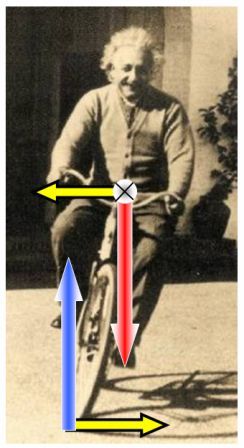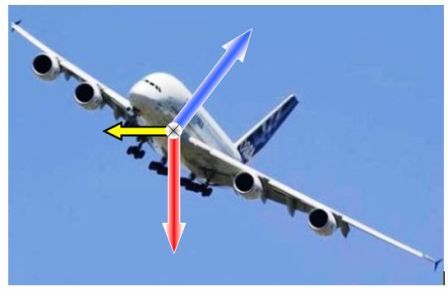 "Of course," Professor Einstein seems to be explaining to us, "the bicycle does not ever travel in a straight line but must follow a curved pathway at all times either to the left or to the right, using centrifugal force to keep from falling. Like so, see?"Weight W is a force applied to the center of gravity of the cycle-and-rider and always acts vertically, pointing toward the center of the earth. A 'lifting' force L points upward from the ground in contact with the wheels, such that L = W. The bike is shown leaning left. The unaligned forces, L and W, acting together, would cause the bike and rider to fall down. However, as suggested by Einstein, a horizontal force we shall call FCENTRIFUGAL acts through the center of gravity of the cycle-and-rider pointing toward the outside of the curving pathway. That force is balanced by a friction force FFRICTION from the ground, such that FFRICTION = FCENTRIFUGAL. {Sidebar}
The lifting force L always points perpendicular to the wings and can be assumed for this puzzle to act through the center of gravity of the aircraft. Not all of the lifting force is available to support the plane. Only the vertical component of L overcomes weight W. The horizontal component balances the centrifugal force FCENTRIFUGAL, thereby keeping the plane turning.
Suppose that just as the plane passes
the bike, both commence
a turn. The bike leans, say, to the left by 30
degrees, and the plane
banks to the left by 30 degrees. They both
complete a circle and
each resumes its common direction. Not
surprisingly, the bike gets
back to the starting point first, leading the plane...
|

